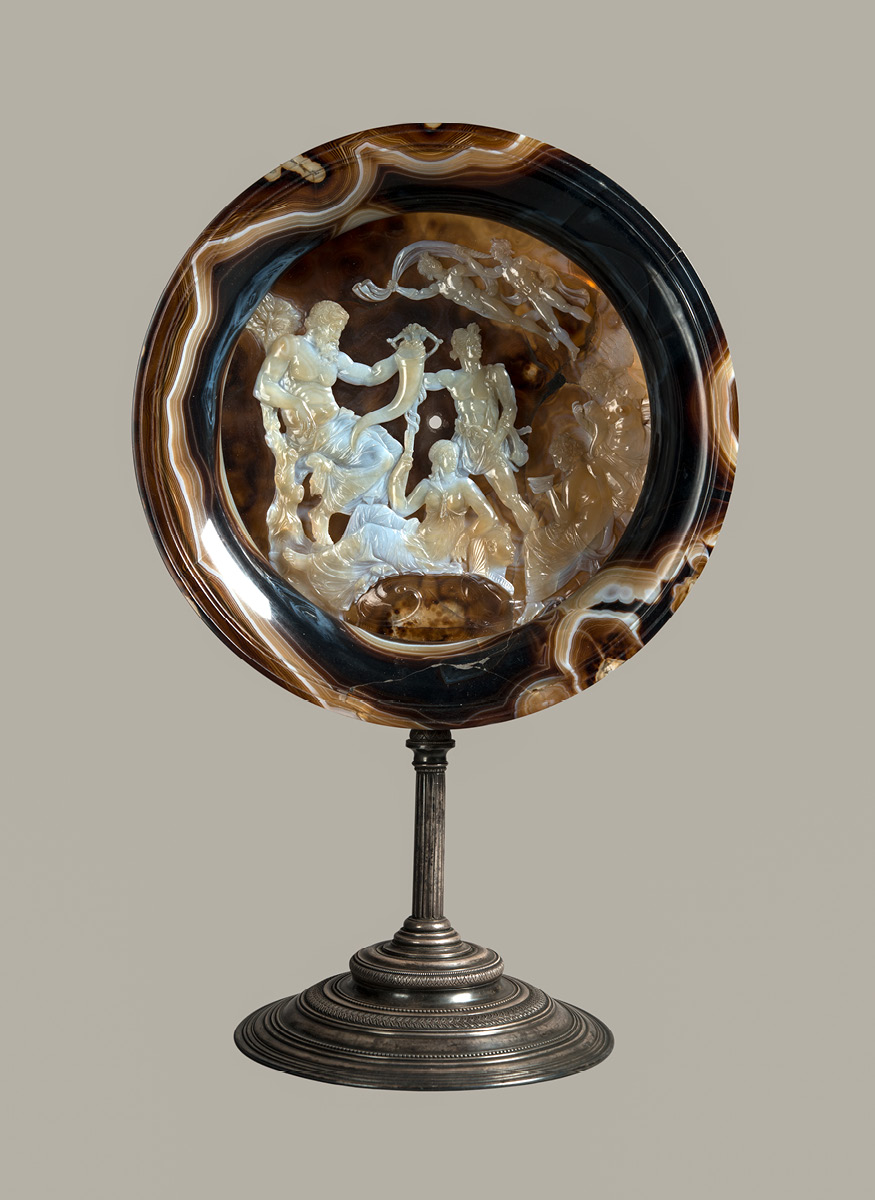Farnese gems
The collection of gems housed by the National Archaeological Museum of Naples, which boasts more than 2000 artefacts, clearly documents on the one hand the refined ability of ancient craftsmen and on the other the enthusiasm which animated the collectors of
Italian and European courts since the Renaissance.
The core of the collection, enriched over time with the about three hundred and fifty gems found in various sites of ancient Campania, consists of one of the most extraordinary collections of glyptic art ever formed in Italy: the Farnese collection. It took
shape in Parma by the mid-17th century, incorporating the donations and bequests of pre-existing collections belonged to Lorenzo de’ Medici and to the Venetian cardinal Pietro Barbo, future pope Paolo II, to which the gemstones collected by the cardinals Ranuccio
and Alessando Farnese and by their librarian Fulvio Orsini added up.
Inherited by king Charles of Bourbon, the collection was moved to Naples, where, about two decades later, it was hosted in the Villa of Capodimonte. When the French rule started in 1806, king Ferdinand IV of Bourbon fled to Palermo and took the collection with
him. Only in 1817 was the collection back to Naples and housed in the Cabinet of the Precious objects of the Royal Bourbon Museum.
The current gallery “Farnese Gems” displays in two rooms on the ground-floor of the Museum a selection of 491 objects, among the most significant models of cameos and engraved gems.
Room IX (9) displays the corpus of gems, associated with Ranuccio and Alessandro Farnese, organized according to the different iconographic themes; room X (10) exhibits the other two more historically important collections: Barbo’s gems and Lorenzo de’ Medici’s
Treasure, displayed according to the different masters and periods. Fulvio Orsini’s bequest is also organized according to the different themes, as to emphasize the interest in myths and iconography of the antiquarian of the Farnese family.
The most extraordinary piece is the so-called Farnese Bowl, the most famous and largest cameo of antiquity, carved out of sardonyx agate and manufactured at Alexandria of Egypt, between the late 2nd century and the 1st century BC. The bowl has come down to
us from antiquity through an intriguing series of transitions from one owner to another.
The collection also includes many other masterpieces, real miniature sculptures, which evoke famous iconographic models.
More resources:
Le gemme del MANN on GoogleArts&Culture
Videos on YouTube channel of the MANN:
Video of the Farnese Bowl - MANN Stories
Video-guide in IS with subtitles
Main volumes dedicated to the collection and to the works of art on display:
V. Sampaolo, L. Spina, Tazza Farnese, Five Continents Editions, 2018;
C. Gasparri (a cura di), Le Gemme Farnese. Museo Archeologico Nazionale Napoli, Electa Napoli, 2006.










